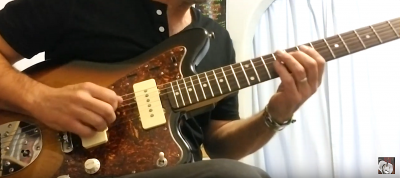3 Rules Of E.q. |
|
|
|
|
|
| Apr 30 2020, 05:10 PM |
|
Related to individual instruments, guitar and bass in particular - as much as possible, sculpt your tone/sound before you commit to 'record'.
There's an old saying in recording, "garbage in, garbage out". -------------------- - Ken Lasaine
https://soundcloud.com/klasaine2/foolin-the-clouds https://soundcloud.com/klasaine2/surfin-at-the-country-hop Soundcloud assorted ... https://soundcloud.com/klasaine3 New record ... http://www.cdbaby.com/cd/kenlasaine Solo Guitar ... https://www.youtube.com/playlist?list=PLXZh...5iIdO2tpgtj25Ke Stuff I'm on ... https://www.youtube.com/playlist?list=PLXZh...b-dhb-4B0KgRY-d |
|
|
||
|
|
|
|
| May 6 2020, 03:27 PM |
|
3 CUT BEFORE BOOST If possible, try to CUT or Lower a given frequency before you boost or increase it. For one thing, when you boost sound you also boost noise. In addition, you now may need to boost something else as it’s easy to unbalance a mix with boosting. Try cutting/removing instead. This can give things more room to breathe and keep your mix from sounding to cramped. Always try the before and after approach when using your CUT. Listen with your e.q.cut, then turn off the e.q., and see if it’s made your mix better or worse. ANYBODY HAVE ANY OTHER E.Q TIPS? In relation to 'cutting before boosting' - use that HPF or high pass filter. Whether you're recording in the box or actually micing amps, cutting the low lows tends to let the guitar sit better in a mix. Most interfaces have a hpf button right on the front or top. Some mics have a switch and all the amp plugins that I've seen do too. It's a quick remedy that a lot of folks don't take advantage of. -------------------- - Ken Lasaine
https://soundcloud.com/klasaine2/foolin-the-clouds https://soundcloud.com/klasaine2/surfin-at-the-country-hop Soundcloud assorted ... https://soundcloud.com/klasaine3 New record ... http://www.cdbaby.com/cd/kenlasaine Solo Guitar ... https://www.youtube.com/playlist?list=PLXZh...5iIdO2tpgtj25Ke Stuff I'm on ... https://www.youtube.com/playlist?list=PLXZh...b-dhb-4B0KgRY-d |
|
|
||
|
|
|
|
| May 6 2020, 06:25 PM |
|
We often don't get a desired sound exactly how we hear in our head when creating guitar tones itb. At that stage its usually best not to add extra eq, relying on amp and cab. sim. mainly. After we record the other elements in a song, its then to consider if still extra eq'ing is needed. Cause now we can reference the other tracks and the overall mix which helps avoiding eq mistakes. Very true! The biggest mistakes guitar players make is that they'll sculpt this big, beautiful, full and lush tone ... that ultimately ends up not working in the track. It takes a lot of practice and experience to "hear the tone that's going to work". -------------------- - Ken Lasaine
https://soundcloud.com/klasaine2/foolin-the-clouds https://soundcloud.com/klasaine2/surfin-at-the-country-hop Soundcloud assorted ... https://soundcloud.com/klasaine3 New record ... http://www.cdbaby.com/cd/kenlasaine Solo Guitar ... https://www.youtube.com/playlist?list=PLXZh...5iIdO2tpgtj25Ke Stuff I'm on ... https://www.youtube.com/playlist?list=PLXZh...b-dhb-4B0KgRY-d |
|
|
||
1 User(s) are reading this topic (1 Guests and 0 Anonymous Users)
0 Members:






















